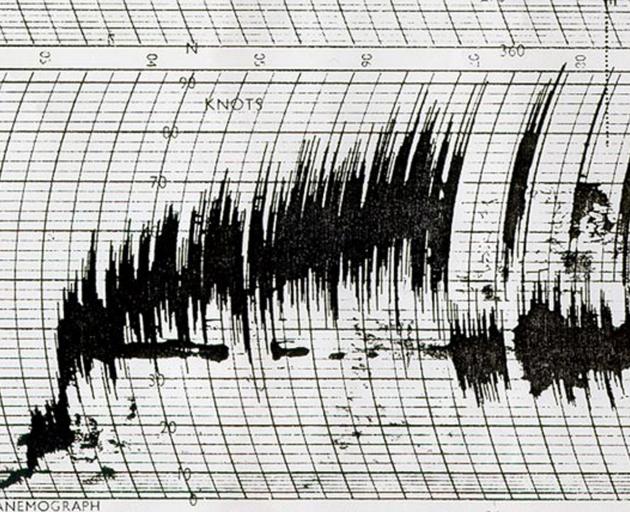

I was only 3 at the time of the Wahine storm and not even living in New Zealand. It was one of those pieces of national history I learned about at school here. But I do have a Wahine storm story.
Some 20 years after the tragedy, I was working for the MetService at Wellington Airport. I knew all about the ferocity of the winds along the south coast of Wellington and around Cook Strait, and there were days when you could feel the gusts blowing your feet out from under you as you walked across the tarmac to do your hourly weather observations.
One of my workmates was Mike Finn, a lovely Irishman from Galway who had been a stalwart of the Wellington Airport office for donkey’s years. Mike has, sadly, since passed on to higher duties. But nobody knew more about Wellington weather than he did. And he had some amazing stories of his time at the airport, including the day the Wahine went down.
Always in the right place at the right time, Mike was on duty the morning of Wednesday, April 10, 1968. When he arrived at work about 3am, there was just a light southerly blowing. An hour later, it was averaging about 44 knots (82kmh) with gusts to 60 knots (111kmh) — severe-gale force — and continued to build, to everyone’s amazement, over the next few hours.

The airport anemograph could barely cope with the wind and the recorded trace was going off the top of the chart. There was a feature on the instrument for such extremely rare events and it was Mike who flicked it to half-scale, to ensure the record of this unprecedented event was not lost. You can see this on the anemogram, and also where it was turned back to full-scale each time it seemed the wind was dying a little.

When Mike finished his shift about 1pm, he walked back to the car park in the rapidly easing southerlies and discovered the side of his car facing south had been sand-blasted back to bare metal. He also remembered a large ‘‘Welcome to Wellington’’ airport sign there had been bent at right angles in the middle.
I was very happy when I found this copy of the anemogram online. It’s nice to think it was Mike who was behind the efforts to record for posterity such an exceptional storm.
I’d love to hear any memories you may have of the Wahine storm in Wellington, or elsewhere in the country as it tracked further south and caused flooding and further chaos.
Also keen to hear of your stories of the windiest weather you’ve experienced. For me it was the Canterbury big nor’wester blow of August 1, 1975. That was unbelievable, with a maximum gust of 93 knots (172kmh) at Christchurch Airport — but still not up there with the Wahine storm.
Daylight saving
Not too much room left in today’s column, but a nice note from Kathleen Baff, of Stirling.
‘‘I love it when daylight saving, or daylight ‘slaving’ as it is referred to by a few locals here, ends.
‘‘When it comes into action, we get up earlier and stay up later because it’s so light — and the ‘new’ time tells us to. The twilight time here in the South seems even longer and it’s still ‘light’ past 10pm.
‘‘With seemingly longer days, people seem more rushed to cram as much as possible in — hence the referral to ‘slaving’. There’s good and bad in that scenario.
‘‘For the first time since its inception, when daylight saving ended this year, I felt a sense of relief. My days seem more relaxed somehow. Does anyone else feel this effect? What a difference an hour makes.
‘‘As for the period of daylight saving, it would be easier to go from Labour Weekend through to Easter, no matter when it falls, rather than the first or third week of whatever month. September is too early and has no long weekend to say ‘ah, here we go again’.
‘‘The great ‘they’ can have their daylight saving — just keep it simple and more realistic, from Labour Weekend to Easter.’’
I couldn’t agree more, Kathleen. It starts way too early in spring and finishes much too late in autumn. Anyone else have other thoughts?
